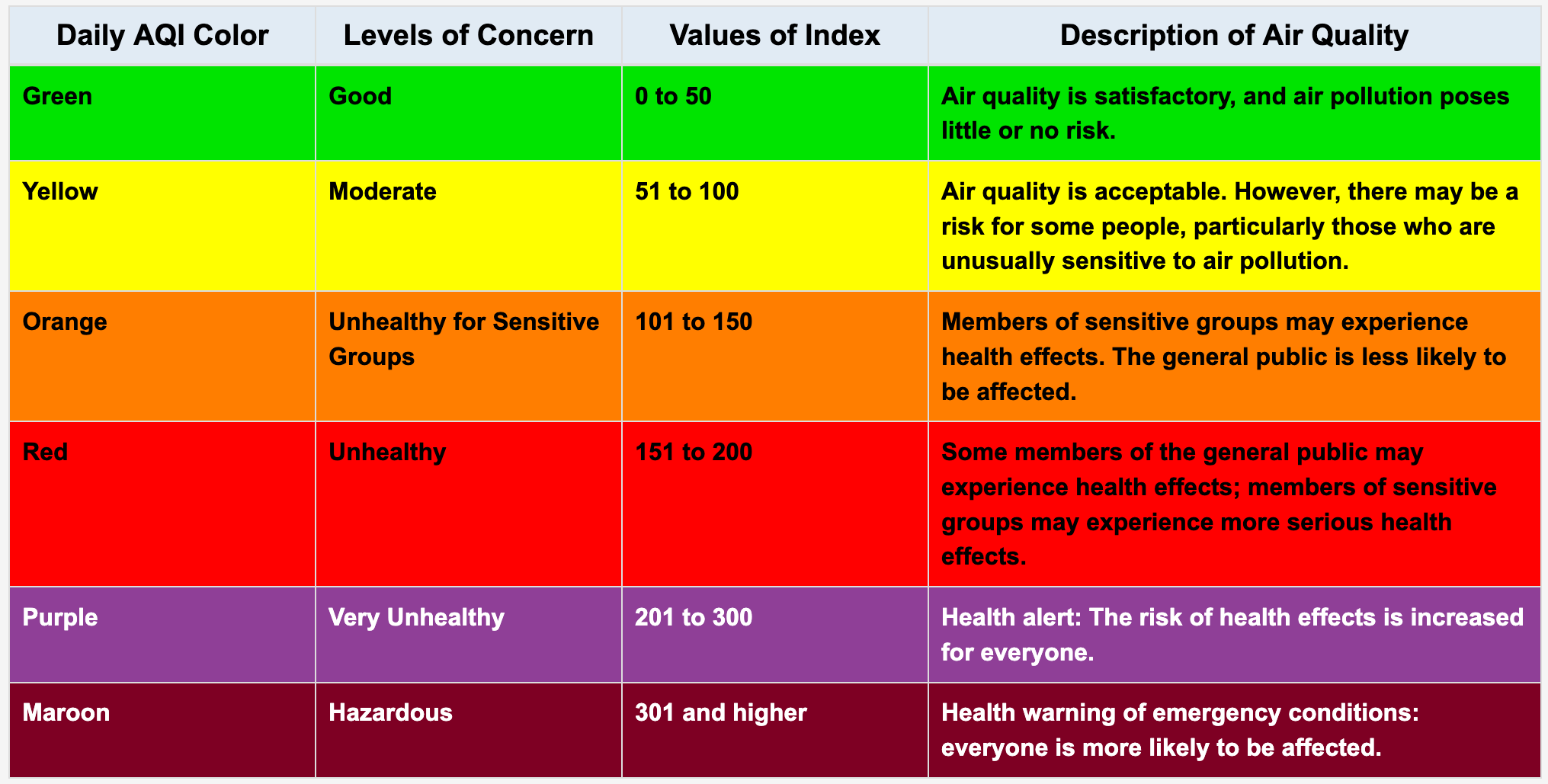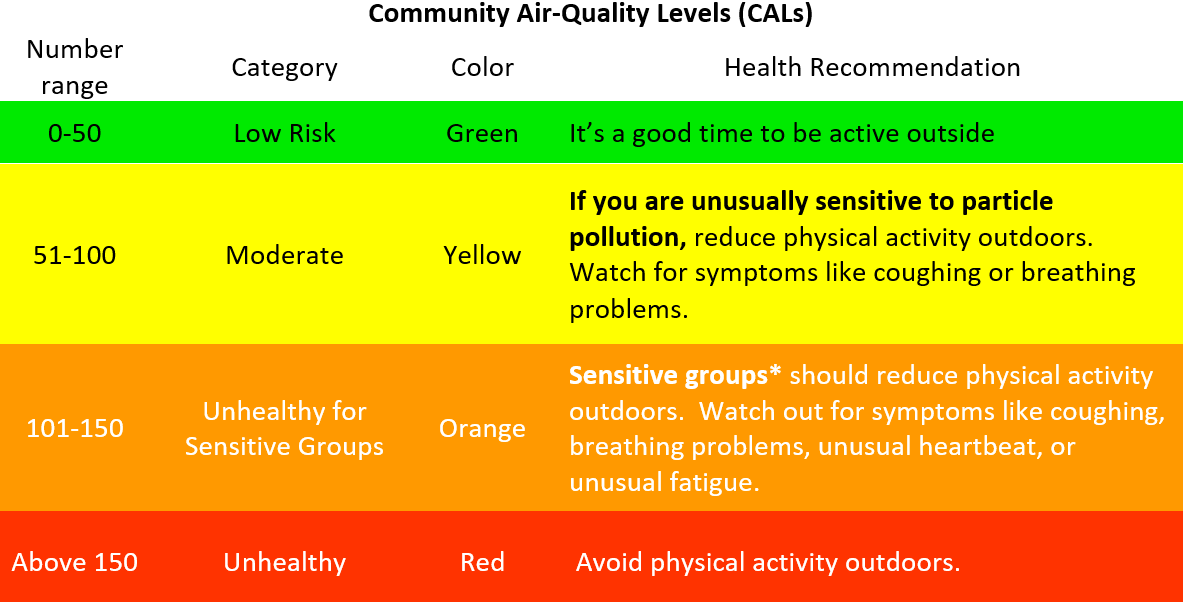Air Quality Index (AQI) Basics
What is the U.S. Air Quality Index (AQI)?
The U.S. AQI is EPA's index for reporting air quality.
How does the AQI work?
The U.S. Air Quality Index (AQI) is EPA's tool for communicating about outdoor air quality and health.
The AQI includes six color-coded categories, each corresponding to a range of index values.
The higher the AQI value, the greater the level of air pollution and the greater the health concern.
For example, an AQI value of 50 or below represents good air quality, while an AQI value over 300 represents hazardous air quality.
For each pollutant an AQI value of 100 generally corresponds to an ambient air concentration that equals the level of the
short-term national ambient air quality standard for protection of public health. AQI values at or below 100 are generally
thought of as satisfactory. When AQI values are above 100, air quality is unhealthy: at first for certain sensitive groups
of people, then for everyone as AQI values get higher.
The AQI is divided into six categories. Each category corresponds to a different level of health concern.
Each category also has a specific color. The color makes it easy for people to quickly determine whether air quality is
reaching unhealthy levels in their communities.
AQI Basics for Ozone and Particle Pollution



